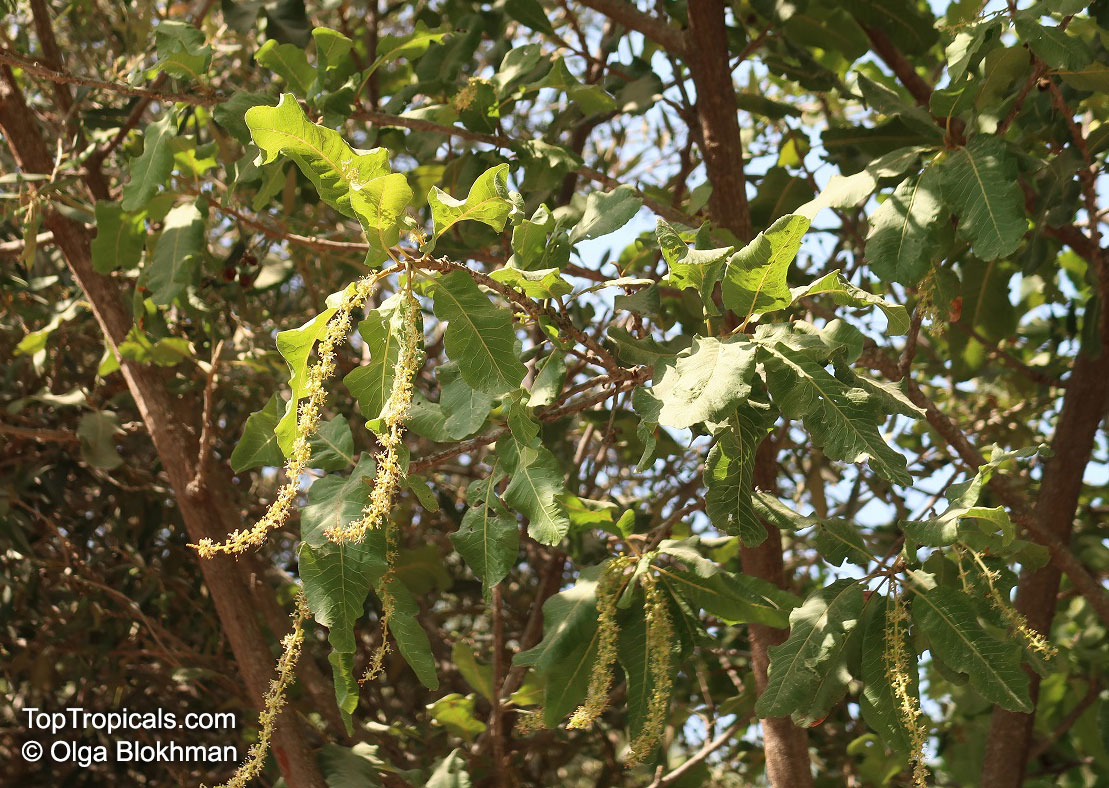Pappea capensis (Jacket Plum)
Top Tropicals Plant Encyclopedia
Botanical name: Pappea capensis
Common names: Jacket Plum, Indaba Tree, Bushveld Cherry
Family: Sapindaceae
Origin: South Africa






The jacket plum can tolerate both cold and heat as well as prolonged periods of drought. It may be used as a specimen tree or as a focal point. Its attractive pale grey stem often has patches of darker colors. It is useful as a street tree or for shade in parking lots as it does not have an aggressive root system. It is also well suited to being employed as part of a mixed screen or wind barrier or as part of a natural bushclump in a wildlife-friendly garden or in large landscapes such as parks and golf courses. As it seldom attains tremendous dimensions it also lends itself to being used in townhouse gardens. It develops a closed, dense crown under cultivation in areas of higher rainfall, which creates a cool shady place for a garden bench.
The delicious and very juicy fruit with a tart flavor is used to make preserve, jelly, vinegar and an alcoholic drink.
Fragrant non-drying golden yellow oil is extracted from the roasted seeds. There are reports of it being used for oiling rifles. It is also used as a purgative and for lubrication, as a cure for ringworm, to restore hair, as well as for making soap.
Leaves, bark and the oil extracted from the seed are used medicinally. The wood is hard, light brown with a reddish tint, tough and heavy with a twisted grain. There is apparently little difference between the heartwood and the sapwood. The stems seldom attain significant girth and therefore do not yield much useable wood. It is, however, used to make sticks, poles, cattle yokes, furniture and kitchen utensils. This tree is still used as an important source of traditional medicine today.










